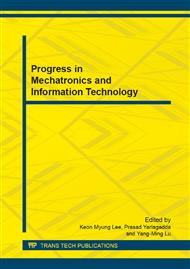p.964
p.968
p.974
p.978
p.984
p.989
p.993
p.997
p.1001
A Non-Repudiation E-Mail Transmission Protocol and its Formal Analysis
Abstract:
In order to reduce the amount of data exchange in E-mail transmission process, a non-repudiation E-mail transmission protocol was proposed based on the digital signature technology. By using the formal analysis based on the extended strand space method, strict authentication and analysis were conducted for the security of data transmission and the identity of both the transmitter and receiver. Furthermore, the safety and effectiveness of this protocol were verified.
Info:
Periodical:
Pages:
984-988
Citation:
Online since:
November 2013
Authors:
Price:
Сopyright:
© 2014 Trans Tech Publications Ltd. All Rights Reserved
Share:
Citation:


